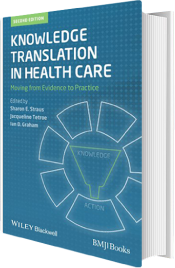In addition to considering the type of knowledge use, we should also consider who are the targets for knowledge use. Different targets may require different strategies for monitoring knowledge use. The target level of knowledge use will be based on discussions with relevant stakeholders including consideration of what is acceptable and feasible and whether a ceiling effect may exist. If the degree of knowledge use is found to be adequate, strategies for monitoring sustained knowledge use should be considered. If the degree of knowledge use is less than expected or desired, it may be useful to reassess barriers to knowledge use.
When should we measure knowledge use versus the impact of knowledge use? If the implementation intervention targets a behaviour for which there is a strong evidence of benefit, it may be appropriate to measure the impact of the intervention in terms of whether the behaviour has occurred (instrumental knowledge) rather than whether a change in clinical outcomes has occurred.
For example, we recently completed a study of a strategy to implement the Osteoporosis Canada guidelines in a northern Ontario community setting. The primary outcome of this randomized trials was appropriate use of osteoporosis medications (instrumental knowledge) rather than patient fractures (clinical outcome). We felt that there was sufficient evidence in support of use of osteoporosis medications to prevent fragility fractures that we did not need to measure fractires as the primary outcome. In cases such as this study, outcome measurement at the patient level could be prohibitively expensive but failure to measure at the patient level does not address whether the intervention improves relevant clinical outcomes.

